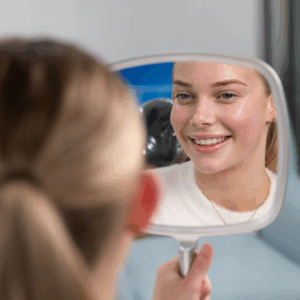How To Prepare For A Tooth Extraction
So you’ve been for your regular oral health checkup and your dentist has delivered the news: that niggling pain you’d been trying to ignore really was serious, and the best course of treatment is a tooth extraction.
The idea of having one of your teeth pulled probably isn’t high on your list of things you’d like to do this year, but a tooth extraction isn’t nearly as scary or painful as urban legend and schoolyard lore would have us believe.
Knowing what to expect can significantly reduce any feelings of apprehension you might have, so read on for tips on how to prepare for a tooth extraction, expected recovery time, and managing post-extraction discomfort.
Talk to your dentist
Your dentist understands you may be nervous about having a tooth out, and will be happy to discuss your concerns with you, answering any questions you might have about the procedure and after care.
Your dentist will chat with you about why a tooth extraction is the best course of treatment during your initial checkup, and will invite you back for an appointment to have the tooth extracted. During your treatment, your dentist will walk you through the process step-by-step, letting you know what they’re doing and what you can expect next to make you more comfortable.
Dial a driver
While most people are able to have a tooth extracted under a local anesthetic – the numbing agent administered during other treatments such as fillings – others may choose a general anesthetic or opt for sleep dentistry during their tooth extraction, especially if dental work makes them particularly anxious.
Talk to your dentist about what kind of pain relief you will require before your appointment, and arrange for a friend or family member to go with you to your appointment, or at least pick you up and drive you home afterwards.
If you’re drowsy or feeling a little off-colour after your tooth extraction, driving can be dangerous, so always call in a favour and have a buddy drive you home.
Expected recovery time
Recovery time will vary between patients and depending on the size of the tooth extracted, but your dentist will be able to give you personalised advice on what you can expect during your recovery period, and tips on aftercare.
Sometimes a few self-dissolving stitches will be required, but this is usually only the case if larger, more challenging teeth – like wisdom teeth – have been removed.
Generally, the extraction site will be tender for the first 24 hours or so, and there may be some minimal swelling and bleeding. Limit physical activity for the day or so following your extraction, and avoid:
- Rinsing or spitting forcefully
- Sucking actions, such as drinking from a straw
- Smoking
- Touching the extraction site when you brush your teeth
Eat soft foods for a day or two to allow the extraction site to heal, and after 24 hours, gently rinse your mouth with a warm salt water solution to aid healing.
If you take good care of yourself, recovery can be as quick as a few days, but don’t hesitate to call your dentist if you feel your gum isn’t healing right.
Managing pain post-extraction
Your dentist will advise you on which painkillers you can take to safely manage any post extraction pain or discomfort. Only take painkillers as directed, and if pain persists, contact your dentist.
If you’re particularly tender for the first 24 hours or so following your tooth extraction, you can gently apply an icepack to the affected area, along the jawline, to ease discomfort and swelling.
Taking it easy and getting plenty of rest will do wonders for your recovery time and managing any pain, so set yourself up on the couch with a good book or a movie marathon and let your body heal itself.
Any surgical or invasive procedure carries risks. Before proceeding, you should seek a second opinion from an appropriately qualified health practitioner.




